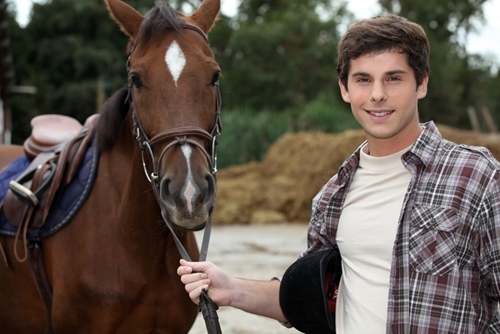While there are many factors that can play into losing a horse’s trust or respect, knowing how to effectively establish leadership with your animal helps offset miscommunication. Horses are natural herd animals and quickly develop a hierarchy with the other horses and people they come into contact with. These animals are able to easily detect insecurity or lack of confidence with trainers, which is why thinking and acting like a leader for your horse is essential to establish trust and companionship. Here are a few tips trainers can take into account for acting like natural leaders for their horses:
Observe your horses
Whether you only have one or several, observing a horse helps trainers gain a better understanding of an animal’s distinct characteristics. Knowing whether your horse is an alpha or omega animal will dictate what types of training strategies you should experiment with. For instance, if you notice that one horse in particular tends to be the more dominant one of the group, odds are that you’ll need to be more stern and direct with your vocal commands and body language to gain its trust. This is because these animals are normally used to calling the shots, so taking orders may come as a foreign concept to them. As for more passive horses, which generally make up the majority of herds, they tend to be less receptive to stress-inducing scenarios and practices. It’s a good rule of thumb to use more methods of positive reinforcement with passive horses, such as rewarding good behavior and displaying encouraging emotions to help build confidence.
Spacing and positioning
Horses are very observant, and once these animals begin to notice your leadership slowly being established, they’ll be more inclined to respect your commands. Much of this has to do with how you poise yourself while you’re training your horse. When walking with any horse, you should always be positioned out in front, standing tall with your shoulders straight. This helps the horses identify that you’re leading the way, while following the animal shows that the horse is the one in charge.
Correcting vs. disciplining
One of the common misconceptions associated with horse training is the practice of disciplining. If your animal isn’t performing the specific duties it’s been commanded to do, displaying signs of anger or aggression may only confuse or upset the horse, furthering the miscommunication. Developing a correctional routine that balances calmness with exhibiting firm and consistent vocal and physical actions is a more effective approach toward obtaining leadership. A quick way to gain control of your horse is to stop it and make it stand quietly, until it’s ready to try and repeat the action again. Proper correcting also requires making your horse perform submissive gestures. This can include placing a hand on a horse’s chest and repeating “back” until the horse walks in reverse, which helps the horse better understand who the leader is.
Establish a plan and rules
Moments of hesitation or uncertainty on your part are clear signs to a horse that they’re not being properly led. With that in mind, always have a plan in mind whenever you’re training your horse, whether it’s a checklist of moves to practice or teaching your horse proper turns. As for rules, being consistent with your actions for correcting and rewarding all types of behavior helps a horse become comfortable with a routine. Treat your horse only when they’ve accurately executed a command, as rewarding them during states of anxiety or fear will only make it believe that this type of behavior is appropriate.
Always think like a leader
The most important factor to establishing leadership with a horse is never taking a break from your position. As the premier trainer and person of contact, you always need to be on your guard to ensure a horse never questions its loyalty or obedience toward you. This doesn’t mean occasional displays of affection are unproductive, but keeping in mind that horses are constantly looking up to you in terms of guidance will only strengthen your leadership role.








